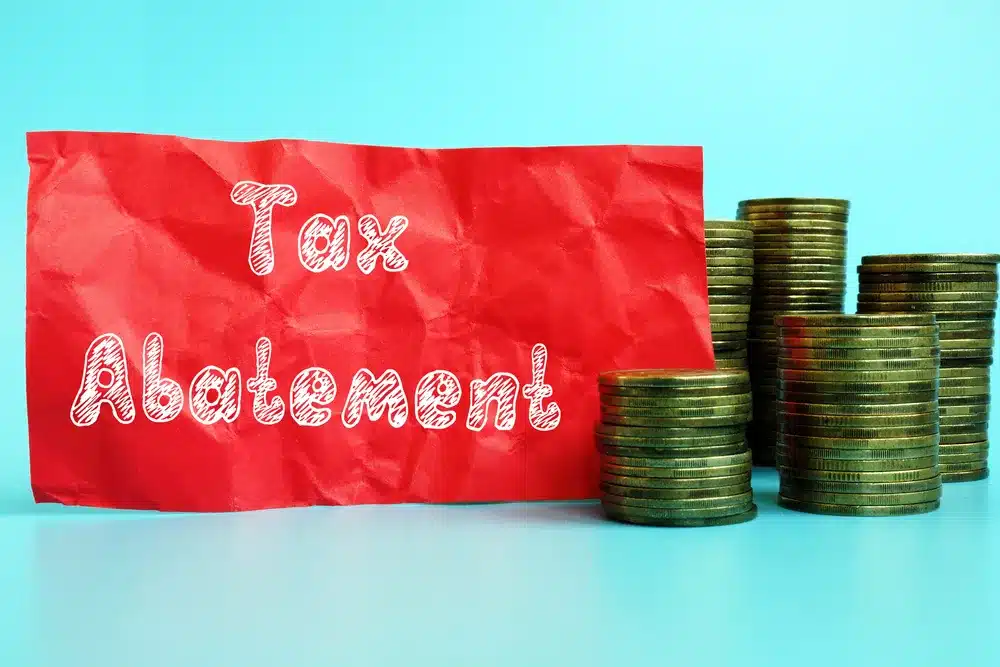The Ultimate Tax Abatement Guide: How To Secure Relief

Settling taxes can be daunting, especially when you must deal with penalties. Luckily, the Internal Revenue Service (IRS) offers different tax relief measures to help taxpayers ease their tax liabilities. One of these is the tax penalty abatement scheme.
In 2021, 57% of U.S. households failed to pay federal income tax. Indeed, many Americans fall behind on their taxes for various reasons.
If you have incurred tax debt for reasons that are beyond your control, you may be eligible for penalty abatement. Read on to learn how this tax relief program works, including its eligibility requirements.
What is a Penalty Abatement?
A penalty abatement is a tax penalty relief measure granted by the IRS to taxpayers who incurred tax liability due to failure to file a tax return, pay taxes owed, or deposit taxes required by law. The IRS offers this relief in the form of a waiver.
The penalty relief has four categories — administrative waivers, reasonable cause, statutory exceptions, and correction of an IRS error. A First-Time Penalty Abatement (FTA) waiver is one of the most common reliefs Americans avail of.
How Tax Abatement Works
An FTA waiver usually covers only one tax year or period and applies to certain penalties:
- For individual taxpayers: Failure-to-pay and failure-to-file and penalties
- For business and payroll taxpayers: Failure-to-pay, failure-to-file, and failure-to-deposit penalties
FTA waivers do not cover gift and estate tax returns. The FTA also does not waive accuracy-related and estimated tax penalties.
You can request penalty relief in three ways, depending on whether the penalty has been assessed or paid:
- If the IRS did not yet assess a penalty: You can file a penalty non-assertion request with the IRS for them to not automatically charge a penalty to your account. Here, you must have a reasonable cause for the request.
- If the IRS already assessed a penalty: You can request penalty abatement by either calling the IRS or writing a letter. In this instance, engaging tax negotiation services can help you get a favorable result for your tax abatement request.
- If you already paid the penalty: You can request a refund using Form 843 (Claim for Refund and Request for Abatement). Filing of the claim must be within two years from the payment date or within three years from the filing date or the return’s due date.
Qualifications and Eligibility for Tax Abatement
You must meet the IRS’s eligibility requirements to qualify for an FTA:
- Payment compliance
One factor the IRS will examine when reviewing your abatement request is your tax payment compliance. Typically, you will have higher chances of getting approved for a penalty abatement if you have dutifully paid your taxes as required or at least made an effort to settle your tax debt. If you have an outstanding tax liability, you must have arranged a payment or installment plan with the IRS.
- Filing compliance
Before making a tax abatement request, check if you filed all the required returns prior to your application. For late tax returns, there must be a filing extension granted by the IRS.
- Clean penalty history
Having multiple penalties on your account can serve as a red flag to the IRS. This can indicate negligence on your part in settling your taxes. To increase the possibility of getting approved for an abatement, you must not have incurred any penalties for the last three years.
Granting a penalty abatement by reasonable cause means your failure to file a tax return, pay your taxes, or make the required tax deposit must be due to any of the following reasons:
- Fire, natural disaster, or other disturbances
- Incapacitation or serious illness of the taxpayer
- Death, incapacitation, or serious illness of an immediate family member
- Other reasons showing that you exercised care and prudence in fulfilling your tax obligations but was unable to do so
How to Request Tax Abatement
If you meet the criteria for an FTA waiver, you can send in a request to the IRS right away. The IRS will review your qualifications to determine the limits of your tax relief. Here are the most common methods for requesting a tax abatement.
- By phone
You may directly call the IRS at the toll-free number found in the top right corner of your notice. Be sure to have the IRS notice next to you when you call. It also helps to write down the following before the call:
- The penalty you want relieved
You can already know if your penalty relief request is approved during the call. Afterward, the IRS will send you a letter showing the breakdown of penalties that have been removed from your taxes.
Meanwhile, the agent will inform you if the IRS needs to further review your case. Here, you will need to submit Form 843 (Claim for Refund and Request for Abatement).
- By mail or letter
If you prefer to request tax abatement through the mail, you may do so. However, note that when requesting penalty abatement for a reasonable cause, you generally must submit a request by mail. Be sure to include all relevant information in your letter, such as your name, Social Security number, the tax year or period, penalty amount and type, and tax form.
Also, it is important to mention that you meet the reasonable cause criteria. Consider attaching your tax return transcripts to prove your payment and filing compliance and that you have a clean penalty history.
Live a Tax Penalty-Free Life
Dealing with taxes can be challenging, especially when penalties are a concern. Thankfully, there are ways to settle them, like the penalty abatement program. With the guide above, you now understand how the process works.
To increase your chances of receiving approval for penalty relief, consider working with Peace of Mind Tax Help. Our team of tax negotiation and mediation experts can help minimize your tax liabilities.
